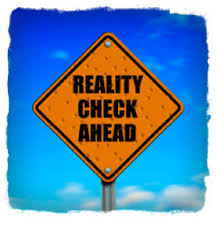 Last night I had two women approach me at my Boot Camp Class at Glass Courts asking about what they needed to do for weight loss. Both regularly exercise, but are discouraged by their results.
Last night I had two women approach me at my Boot Camp Class at Glass Courts asking about what they needed to do for weight loss. Both regularly exercise, but are discouraged by their results.
My first question to anyone interested in losing weight is, “Are you tracking your food?” Now I know I myself have gone back and forth on this issue. There are times that I have become so obsessed with the calories, portions and the breakdown of my nutrients that I’ve had to walk away from tracking. I get how it can become more unhealthy than productive. However, if you’ve never tracked your calories and portions before this can be a very eye opening experience.
I’d like to use my husband as an example of the eye opening experience. I finally convinced him to start using MyFitnessPal with the promise that I would also track my intake. Last night he had several calories still left in the evening (not exactly what I would recommend, since you want to consume your calories early in the day) so he was of course still hungry. It started with salted shelled peanuts, “I can have 14 peanuts.” To which I asked, “Did you ever know before what a portion of shelled peanuts was?” His response, “No, I’d just pour a bowl and eat what was in there.”
Still a little later he was still hungry and made a small plate of cheese, sausage and crackers. As he sat down with me on the sofa he said, “Man, over 400 calories for this little bit.” His eyes are opening to the value of calories for both meals and snacks, as is his awareness of portion sizes.
As someone who does personal training and group fitness, it’s a bit of a professional hazard for me to say this but weight loss and management is 80% about diet and only 20% about your activity levels.
As an example for you, I regularly wear a FitBit Flex. My Boot Camp class was curious how many calories it logged for me while teaching the hour long class which is a combination of exercises with dumbbells, high and low intensity cardio and of course, some abdominal exercises. Last night I checked at the end of the hour long class and it had logged a whopping 282 calories – less than 300 calories for an hour of an intense, sweaty workout! They couldn’t believe it, but I did.
We have to stop believing that an hour in the gym gives us freedom to eat what we want, when we want, with no true regard to portion sizes. Exercise WILL help you build muscle and burn fat, exercise will NOT erase poor choices.
Now I’d like to flip the discussion to those who maybe aren’t necessarily consuming the wrong things, but those who aren’t consuming enough. If you want to lose weight you cannot starve your body of the calories it needs to function. Cutting your caloric intake below your estimated minimum requirements can result in weight loss, however, cutting too many calories may result in your body hoarding all that you eat and storing more fat to prevent ‘starvation.’ Now you know you aren’t starving, but your organs don’t know that and they are designed to do everything they can to keep you alive.
Eating too few calories can be just as damaging to your weight loss goals and metabolism as eating too many.
So what should you do?
- Start tracking your intake to get a baseline for where you are. There are tons of free apps and websites, you don’t have to pay money for these tools. Commit to at least a couple weeks to understand your eating habits and caloric consumption.
- In tracking your food, check the nutritional breakdown of your overall day. You should be consuming about 50% carbs (these are fruits and veggie carbs – not breads and pastas), 30% healthy fats (avocado, hummus, olive oil, nuts, etc) and 20% protein (lean meats, egg whites).
- Start an exercise log. Now I caution, some of the caloric burns that the tracking apps and websites give seem inflated to me. Use these with caution, but again, get a baseline for your true activity levels.
- Keep in mind that to lose one pound you must create a deficit of 3,500 calories. That means in a week you need to eat less, burn more or a combination of the two to equate 500 calories a day. Losing 2 pounds a week would mean a 7,000 calorie deficit = 1,000 calories/day!! So stop beating yourself up if you only lose a pound in a week – you’ve done it the right way.
Once you have a sense of where you are, you will have a more realistic idea about how to get to where you want to be. There is no single magic formula that will work for everyone. I personally have found what works for me. But it’s taken some trial and error, I’ve lapsed into bad habits along the way, and I’ve rebounded into healthy eating as well.
Let’s face it, none of us like a reality check, but without one, you could be sabotaging your own efforts for a healthy body.
